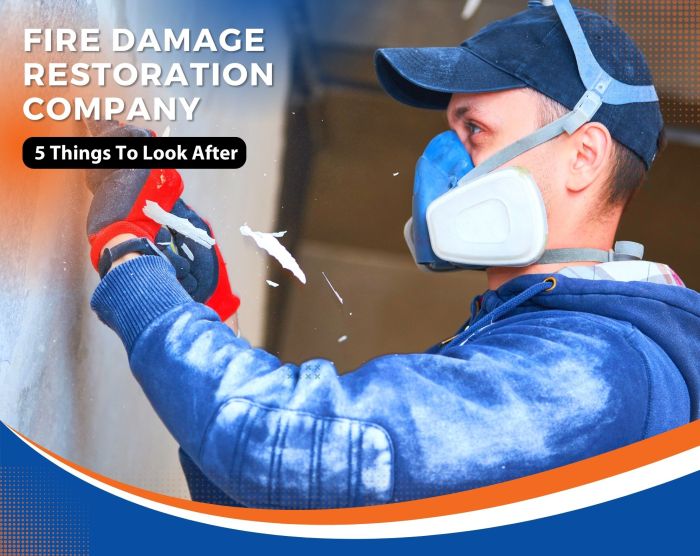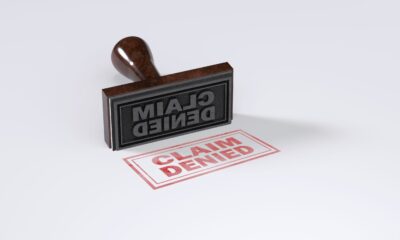General
Crafting a Compelling Title for Fire Damage Restoration Services

Exploring the world of fire damage restoration services unveils a crucial aspect of property restoration that often goes unnoticed. From the initial assessment to the final reconstruction, this comprehensive guide delves into the intricate details of restoring a property post-fire.
Detailing the various techniques, tools, and technologies involved, this narrative aims to provide a clear and informative overview of fire damage restoration services.
Overview of Fire Damage Restoration Services
Fire damage restoration services are professional services aimed at restoring properties that have been affected by fire incidents. These services are crucial in ensuring that the property is safely restored to its pre-fire condition, both structurally and aesthetically.
Importance of Professional Restoration
Professional fire damage restoration is essential due to the complex nature of fire damage. It is crucial to have trained professionals assess the extent of the damage, mitigate further risks, and properly restore the property. DIY attempts can often lead to incomplete restoration and potential safety hazards.
Typical Process in Fire Damage Restoration
The process of fire damage restoration usually involves several key steps. First, the property is inspected to assess the damage and develop a restoration plan. Next, debris removal, cleaning, and sanitization are carried out. Finally, repairs, reconstruction, and restoration of the property are completed.
Common Services Offered
Smoke and soot removal
Professional cleaning to eliminate smoke and soot residue.
Structural repairs
Restoring the structural integrity of the property.
Odor removal
Eliminating lingering smoke odors to improve indoor air quality.
Water damage restoration
Addressing water damage caused by firefighting efforts.
Content restoration
Cleaning and restoring personal belongings affected by the fire.
Assessing Fire Damage
When it comes to assessing fire damage, restoration experts follow a series of crucial steps to determine the extent of the destruction and the best course of action to take in the restoration process.
Initial Assessment Steps
- Upon arrival at the site, professionals conduct a thorough visual inspection to assess the visible damage caused by the fire.
- They document the affected areas, noting down the severity of the damage and the materials involved.
- Using specialized tools such as moisture meters and thermal cameras, experts identify hidden pockets of damage that may not be visible to the naked eye.
Tools and Techniques Used
- Restoration experts utilize moisture meters to detect water damage resulting from firefighting efforts, which can lead to mold growth if not addressed promptly.
- Thermal cameras help professionals identify areas of heat retention, indicating potential structural damage that needs immediate attention.
- Smoke and soot residue are carefully analyzed using specialized equipment to determine the extent of damage and the appropriate cleaning methods required.
Determining the Best Course of Action
- Based on the assessment findings, restoration professionals develop a comprehensive plan outlining the steps needed to restore the property to its pre-fire condition.
- They prioritize tasks based on the severity of the damage, ensuring that critical areas are addressed first to prevent further deterioration.
- By considering factors such as safety hazards, structural integrity, and potential health risks, experts determine the most effective strategies to mitigate the damage and restore the property efficiently.
Restoration Techniques and Procedures
When it comes to restoring a property after fire damage, various techniques and procedures are employed to ensure a thorough and effective restoration process
Cleaning Soot, Ash, and Smoke Residue
- One of the primary steps in fire damage restoration is cleaning soot, ash, and smoke residue from various surfaces.
- Specialized cleaning agents and equipment are used to remove these residues without causing further damage to the property.
- Surfaces such as walls, ceilings, floors, and furniture are carefully cleaned to eliminate any traces of soot and smoke.
Deodorizing and Purifying the Air
- After a fire, the air in a property can be filled with smoke odors and pollutants.
- Professional restoration teams use air scrubbers, ozone generators, and other advanced equipment to deodorize and purify the air.
- These methods help to eliminate lingering odors and improve the air quality inside the property.
Repair and Reconstruction Procedures
- Once the cleaning and deodorizing process is complete, the repair and reconstruction phase begins.
- Structural damage is assessed and repaired to ensure the safety and integrity of the property.
- Reconstruction may involve replacing damaged materials, such as drywall, flooring, and insulation.
Advanced Equipment and Technology

When it comes to fire damage restoration, utilizing advanced equipment and technology is crucial in effectively restoring properties to their pre-fire condition.
Commonly Used Equipment
- Air Scrubbers: These machines help to improve air quality by removing particles and odors from the air.
- Ozone Generators: Ozone generators are used to eliminate odors by producing ozone that reacts with odor-causing molecules.
- Thermal Foggers: Thermal fogging is a technique used to distribute deodorizing agents in a fine mist to penetrate and neutralize odors.
- Moisture Meters: These devices are used to detect moisture levels in materials to prevent mold growth and structural damage.
- Thermal Imaging Cameras: Thermal imaging cameras help in detecting hidden hot spots or smoldering fires behind walls or ceilings.
Role of Technology in Restoration
Advanced technology plays a significant role in the fire damage restoration process. Air scrubbers help in purifying the air, ozone generators eliminate stubborn odors, and thermal foggers efficiently distribute deodorizing agents throughout the property.
Moisture meters and thermal imaging cameras are essential for detecting hidden damage that may not be visible to the naked eye.
Ultimate Conclusion
In conclusion, fire damage restoration services play a vital role in reviving properties after a devastating fire incident. By understanding the processes, techniques, and equipment involved, property owners can make informed decisions when faced with the aftermath of a fire.
FAQ Corner
What are the key benefits of hiring professional fire damage restoration services?
Professional restoration services ensure thorough cleaning, safe removal of debris, and efficient restoration processes to minimize further damage.
How long does the fire damage restoration process typically take?
The duration varies based on the extent of damage, but it can range from a few days to several weeks for complete restoration.
Is it necessary to evacuate a property during fire damage restoration?
In most cases, temporary evacuation is recommended to ensure safety during restoration activities and to allow professionals to work efficiently.
What are some preventive measures to avoid fire damage in the future?
Installing smoke alarms, practicing safe cooking habits, and regular inspection of electrical systems can help prevent fire incidents.

-

 General8 months ago
General8 months agoBest Insurance Lawyers Near Me for Claim Disputes: Your Ultimate Guide to Legal Assistance
-

 General8 months ago
General8 months agoNavigating Insurance Claim Denial Lawyers Near Me
-

 Design8 months ago
Design8 months agoOutdoor Design Essentials for a Holistic Lifestyle: Integrating CRM Automation for Lifestyle eCommerce Brands
-

 General8 months ago
General8 months agoWellness Lifestyle and Outdoor Living Integration Tips: Modern Farmhouse Exterior Ideas for Luxury Lifestyle Homes
-

 General8 months ago
General8 months agoThe Best Business Insurance for Interior Designers: A Comprehensive Guide
-

 General8 months ago
General8 months agoCrafting a Comprehensive Guide to Medical Malpractice and Insurance Settlement Law Firms
-

 General8 months ago
General8 months agoHow Exterior Renovations Affect Your Home Insurance Rates: A Comprehensive Guide
-

 General7 months ago
General7 months agoDigital health trends transforming Asia in 2025: A Glimpse into the Future of Healthcare




